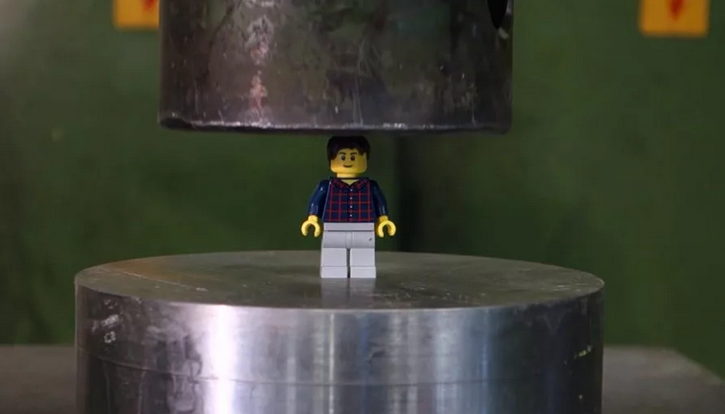Safe Communication: Effective Behavior in Pressured Situations
What does it take to become invulnerable? Is it possible to remain calm in any conflict situation without turning into a silent bystander, a fierce fighter for justice, or a sarcastic mocker? Use these practical tips from professionals to achieve success while avoiding unnecessary stress.
Understanding Communicative Pressure
Everyone occasionally faces situations of communicative pressure. These include conflicts, inappropriate demands, unfounded complaints, accusations, impossible requests, and similar social challenges. Even seemingly harmless requests can fall into this category if, for personal reasons, you simply don’t want to deal with them. Regardless of the situation, there is always a specific source of negative communication—a so-called “problem person” (PP).
When under communicative pressure, people experience not only psychological discomfort but also physiological changes—tension, rapid heartbeat, maybe even cold sweat. These reactions can go unnoticed if you’re absorbed in the situation, but they will inevitably appear unless you protect yourself in time.
The Power of Staying Calm
In situations of pressure, it is crucial to maintain calmness. In V. Tarasov’s book “The Art of Managerial Combat,” there’s a parable that illustrates the importance of staying calm in unpleasant situations. Here’s a retelling:
A caliph fought his enemy for many years. The enemy was strong, his fighting skills matched the caliph’s, and their battle lasted a lifetime. One day, the enemy fell from his horse. The caliph seized the moment and aimed his spear at the enemy’s heart. In that instant, the enemy spat in the caliph’s face. The caliph froze, his spear stopping short.
The caliph touched his face and said, “Tomorrow we will start again.” The enemy, confused, asked, “Why? I’ve waited my whole life for this moment. You could have finished me. What happened?”
The caliph replied, “This was not an ordinary war. I took a Sufi vow to fight without anger. All these years, I fought without anger, but today, when you spat at me, I felt anger for a moment—it became personal. Until then, you were my enemy, but it wasn’t personal. I wanted to win, not to kill you. Now, I wanted to kill you, and that’s why I can’t. So, tomorrow we start again.”
The battle never resumed, as the enemy became a friend, saying, “Teach me. I want to fight without anger.”
Calmness is a great strength! It’s pointless to get nervous or upset under pressure. Of course, pressure is unpleasant—negative emotions, even anger, can arise. It’s infuriating to listen to unfounded accusations! But negative emotions don’t change the situation. Emotions are tricky: life is impossible without them, but in excess, they become dangerous. Negative emotions stay within us and, like a boomerang, harm us from the inside. A calming breathing technique (diaphragmatic-relaxation breathing) can help.
With a few deep breaths, you can “face the situation with a calm heart and clear mind” and resolve it confidently in your favor.
Don’t Justify or Argue
If you start justifying yourself in response to criticism or accusations, or apologize for things you can’t do, the problem person will only intensify their attack. By justifying or arguing, you take the bait. The problem person uses any information you give as fuel for their assault—your justifications are like kindling for a fire. By justifying, you support their attacks!
At the start of any confrontation, decide what you need: to justify yourself (and thus acknowledge the validity of their claims) or to maintain your position and defend your opinion.
Justifying yourself also puts you in a manipulated position: you’re following their plan by responding to criticism. In pressured situations, never respond automatically to the problem person’s statements. Pause and let them vent their aggression. Their pressure will gradually decrease—they’ll “let off steam” and weaken. Then, steer the interaction in the direction you want. Justifying or responding to criticism is as energy-consuming as ineffective carpet bombing. In pressured situations, use targeted responses—like the techniques we suggest.
Don’t Be Thrown Off by Emotions
If the problem person is overly emotional, don’t let their affect throw you off course. Let them raise their voice and talk a lot. Remember, whatever they say is just sound—nothing more. Words can only harm us if we assign them meaning or exaggerate their significance. As Mark Twain once said, “Noise proves nothing. Often a hen who has merely laid an egg cackles as if she laid an asteroid.”
Step-by-Step Algorithm for Overcoming Pressure
To protect yourself and minimize emotional losses in pressured situations, you need a clear strategy. Your actions should be effective with minimal energy expenditure. Here’s an algorithm to follow:
- Step One: Decide what you want to achieve from this interaction. Set your goal.
- Step Two: Stay calm. Use self-monitoring and proper breathing.
- Step Three: Ignore criticism and avoid arguments. Pause before responding.
- Step Four: Respond with a technique that counters the pressure.
Note: When using this algorithm, stick to your chosen course of action. Move toward your goal to exhaust the other person’s ability to influence you.



